 |
| Fire trailer on Pebble Island |
In the morning, we were taking a tour of the west side of the island with Jackie. But first it was the airstrip run as Alan and two other guests were flying out today. There are always two of the islanders that go to the airstrip, and they have multiple responsibilities. First the airsock has to go up, and they call in the wind speed and direction to the base at Stanley. Next there is the job of driving over the airstrip and chasing away any sheep, birds, horses or anything else that might get in the way of the plane. Then they have to hitch a fire trailer up to the 4x4 and be ready to act as fire crew should there be any incident in landing or takeoff.
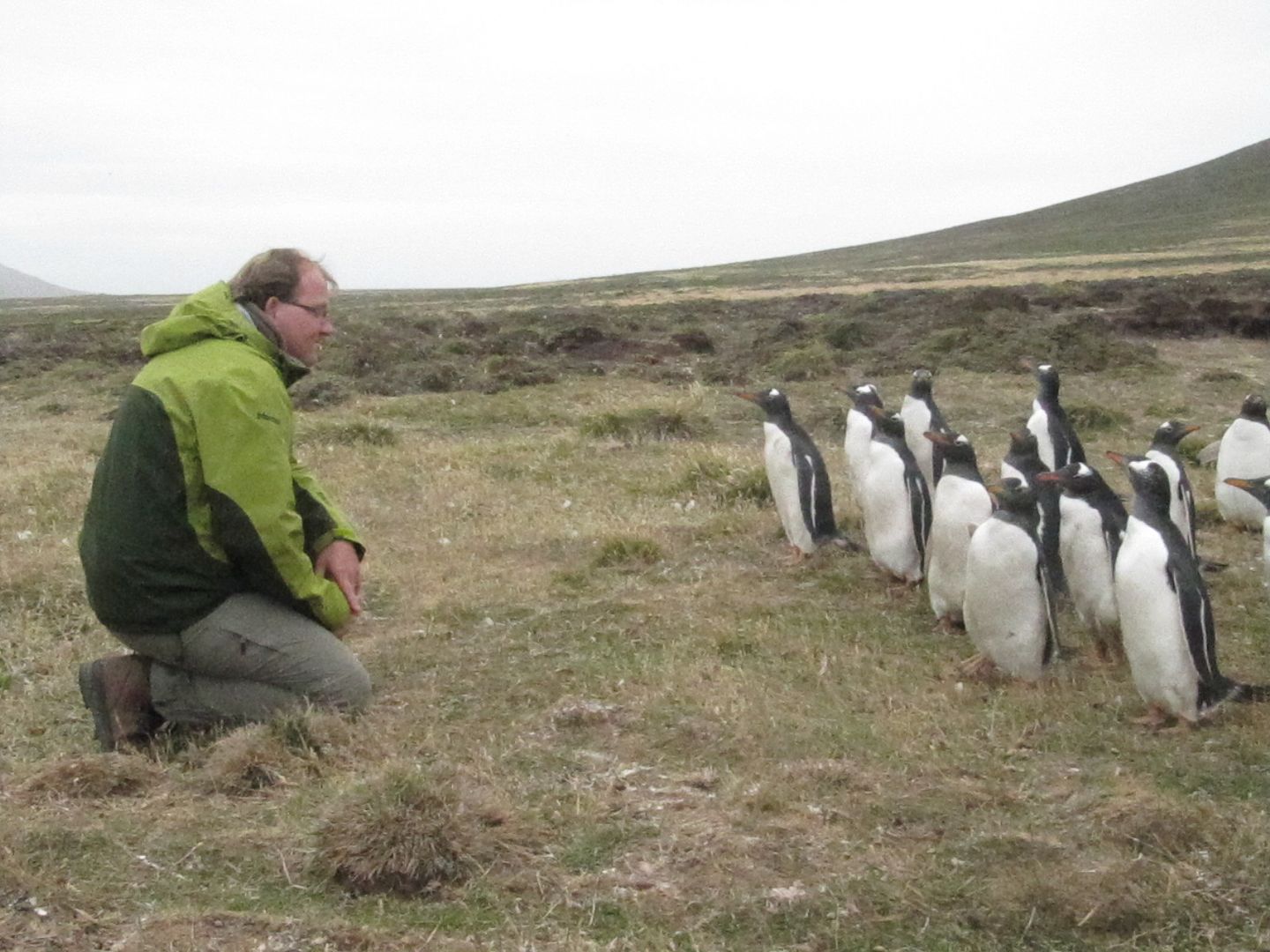 |
| Nic with the starting line of gentoos |
Air duties complete and the plane safely back in the air, we set off for the tour. There was quite a lot of driving involved today and Jackie had to negotiate her way over some tricky ditches and streams.
Our first stop today was the Gentoo penguin colony. Their site here is some way inland but they had created themselves a little mud bath to splash around in and many of them were filthy.
 |
| Gentoos on Pebble Island |
It fascinated us the way that they would run from us initially, and then how a group of them would gradually edge back towards us in a little line.
They would stop a few metres away, until one would bravely take another step or two, and the others would follow suit. This would continue until they were quite close and then, especially if you had got down to their level, perhaps the boldest would come right up to us and maybe take a little peck to check us out. Thankfully they were usually quite gentle in their pecking, and usually their would go for the boots, trouser legs, or the tabs on the zip of the fleece.
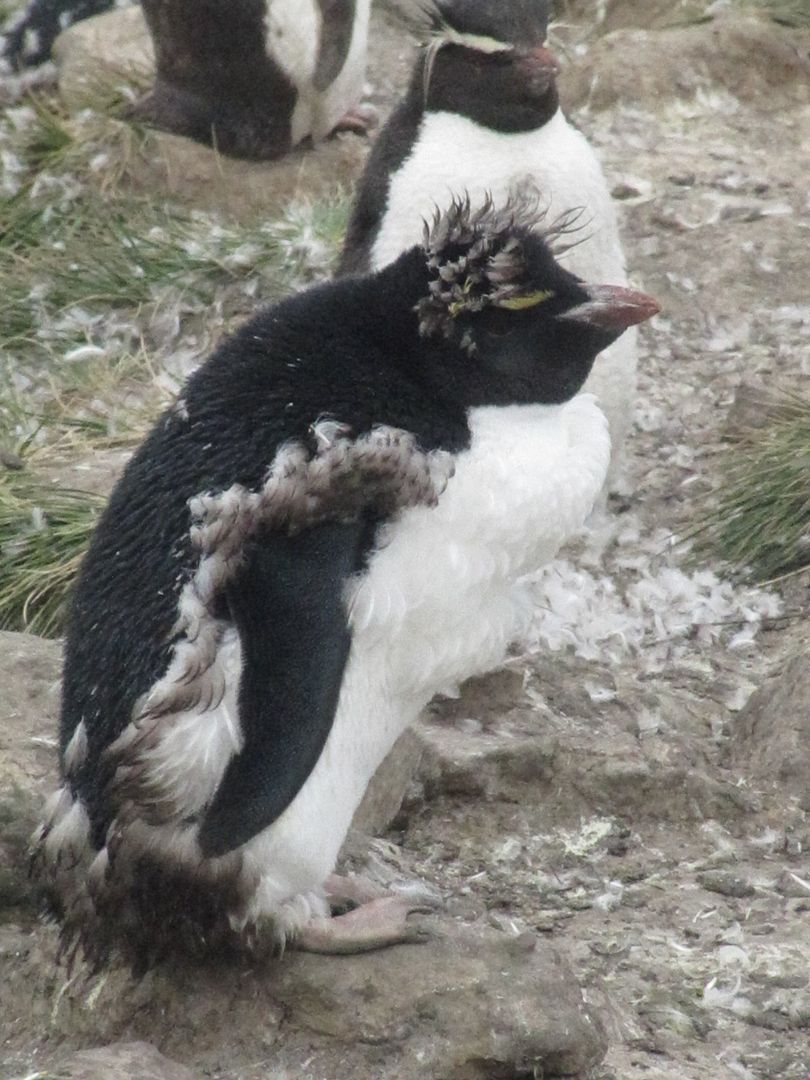 |
| Moulting rockhopper |
From the Gentoos, we drive on to the huge colony of rockhoppers on Pebble. Their route down to the sea is steep and fairly precarious, but they manage it quite impressively. The even more impressive thing though is that they don’t get smashed on the rocks at the bottom; the waves crash into the coast very strongly, and it is a wonder that the little penguins make it in and out of the sea in one piece. Many of the penguins are still moulting so can't go out to sea yet, and they stay at the nest site. They do look amusing in their various stages of shedding their fluffy feathers, and the ground around them looks like it has been snowing.
 |
| Rockhoppers passing by |
Having spent some time round the nests, I wandered over to the route that the penguins take down to the sea. I sat down on some low rocks alongside their normal path and waited until some came along. Initially those that came through took a wide berth around me, but soon a small group started to gather a short distance away. They appeared to be getting up the numbers and courage to walk right by me. They hesitated for a while, but then one seemed to take the lead and they all marched by. They kept pretty close together, and the last one was keen not to be left behind, but they made it through and from then on the little rockhoppers seemed quite happy to waddle past me.
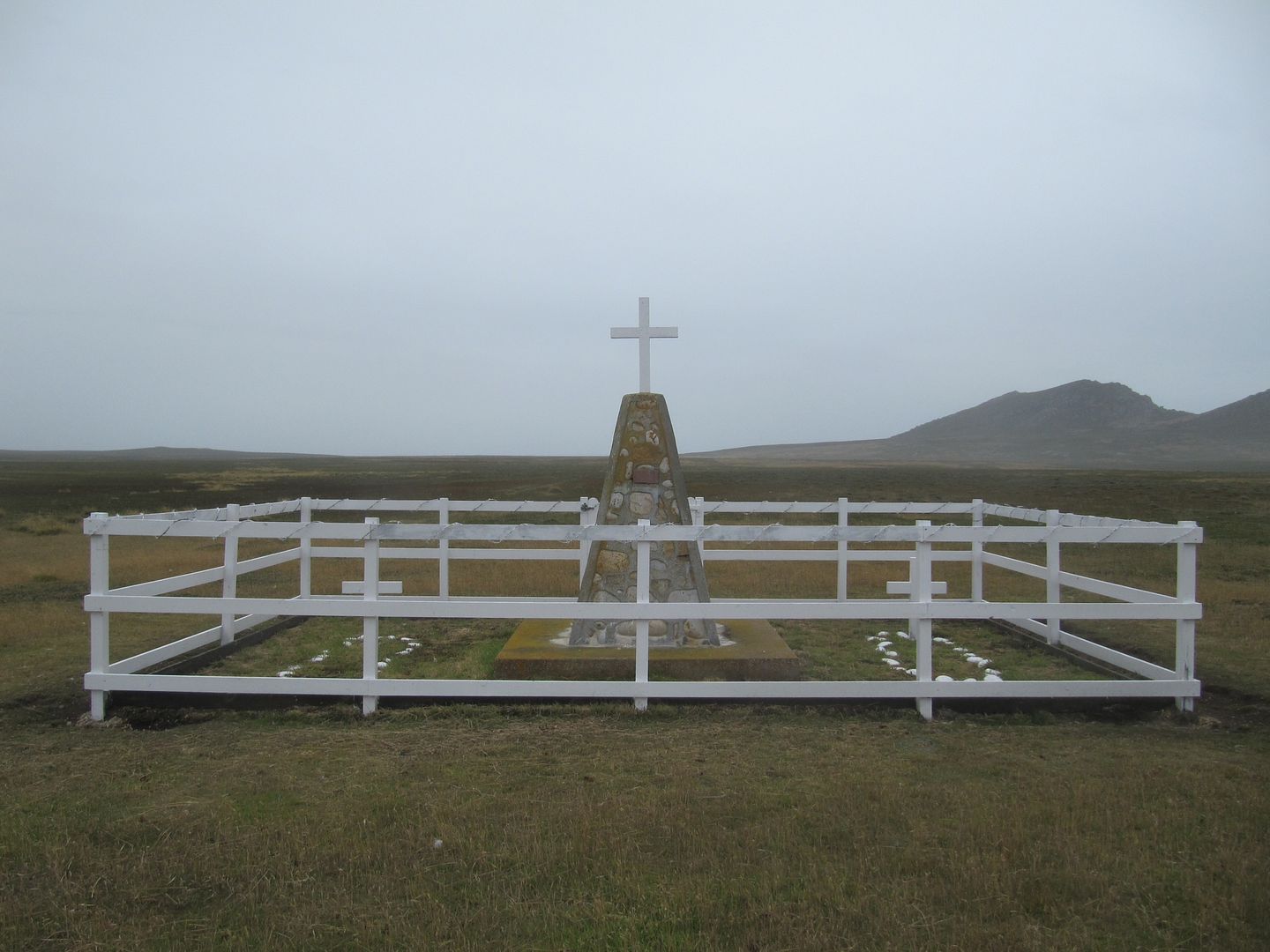 |
| Argentine Learjet memorial & graves |
Our next stop was the site where an Argentine Learjet was shot down in the conflict. While all deaths in war are regrettable, this was more poignant for the fact that when the plane was hit it didn't explode, so the five crew on board were alive and conscious as it plunged to the ground. The radio operators could hear their screams all the way until the plane crashed down. The remains of the bodies that were found at the time were buried in the Argentine cemetery in a single grave with all five names, but years later an especially dry spell revealed some parts of the plane in a boggy area, and more remains were found. These were buried at the memorial, and again all five names were listed. I think it is a testament to the people who were on Pebble Island, who were held captive in the lodge during the conflict, that they have maintained this site as well as those to the British casualties.
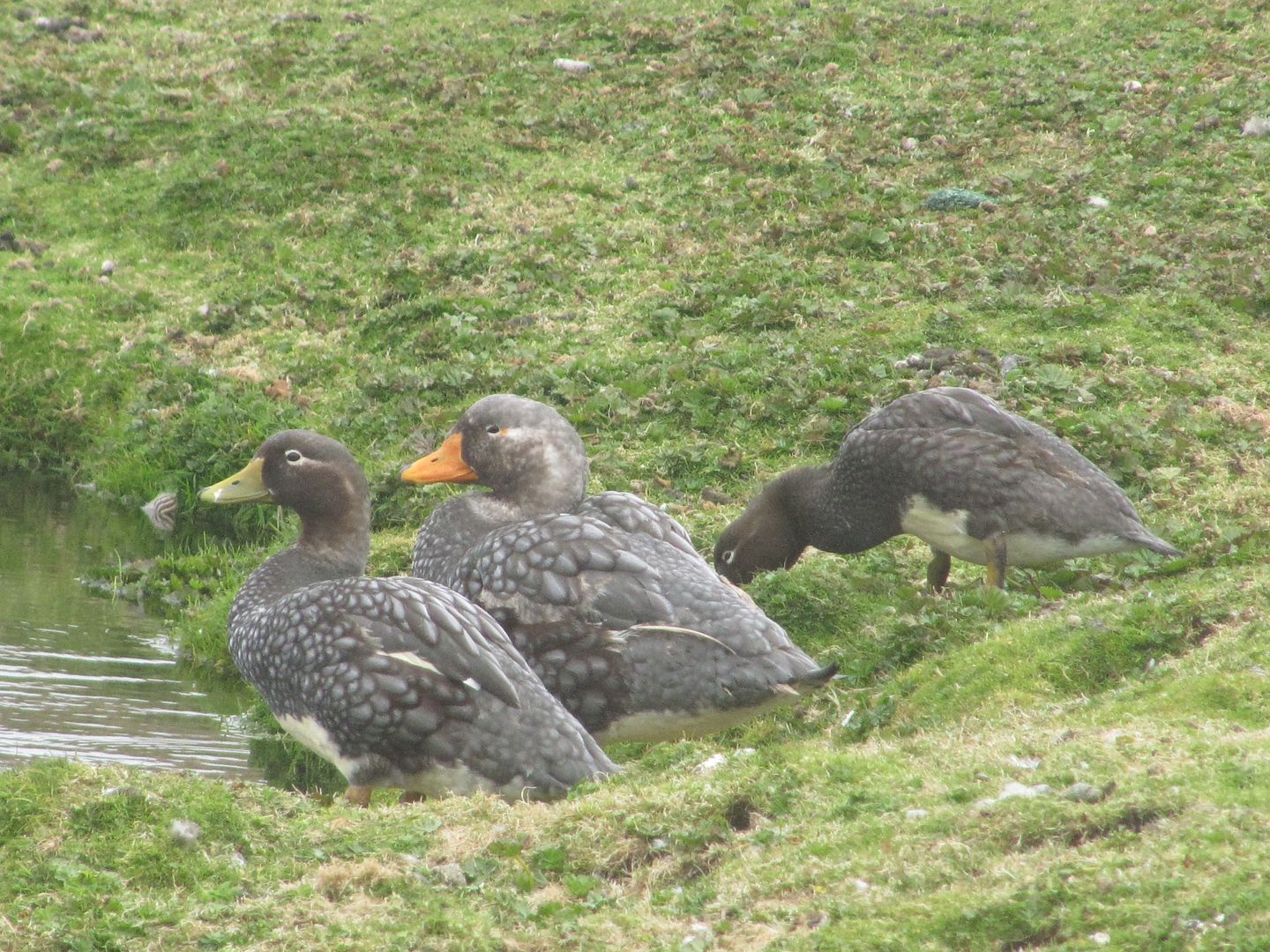 |
| Flightless Steamer Ducks |
From here we drove down to the shore passing a group of steamer ducks. There are two types of steamer ducks, the flightless ones and ones that can fly. Jackie thought these were the flightless ones but as there is very little difference, the only way to be sure which you are seeing is if it starts to fly. These didn't fly but they may just not have felt like it!
 |
| Great Southern Petrels |
On the beach we found more gentoos, before driving up the steep bank to watch the Great Southern Petrels. These large birds look rather ungainly on the land, especially as they run to take off, but once in the air they move rather more elegantly, even if they do look a bit like a lancaster bomber to me.
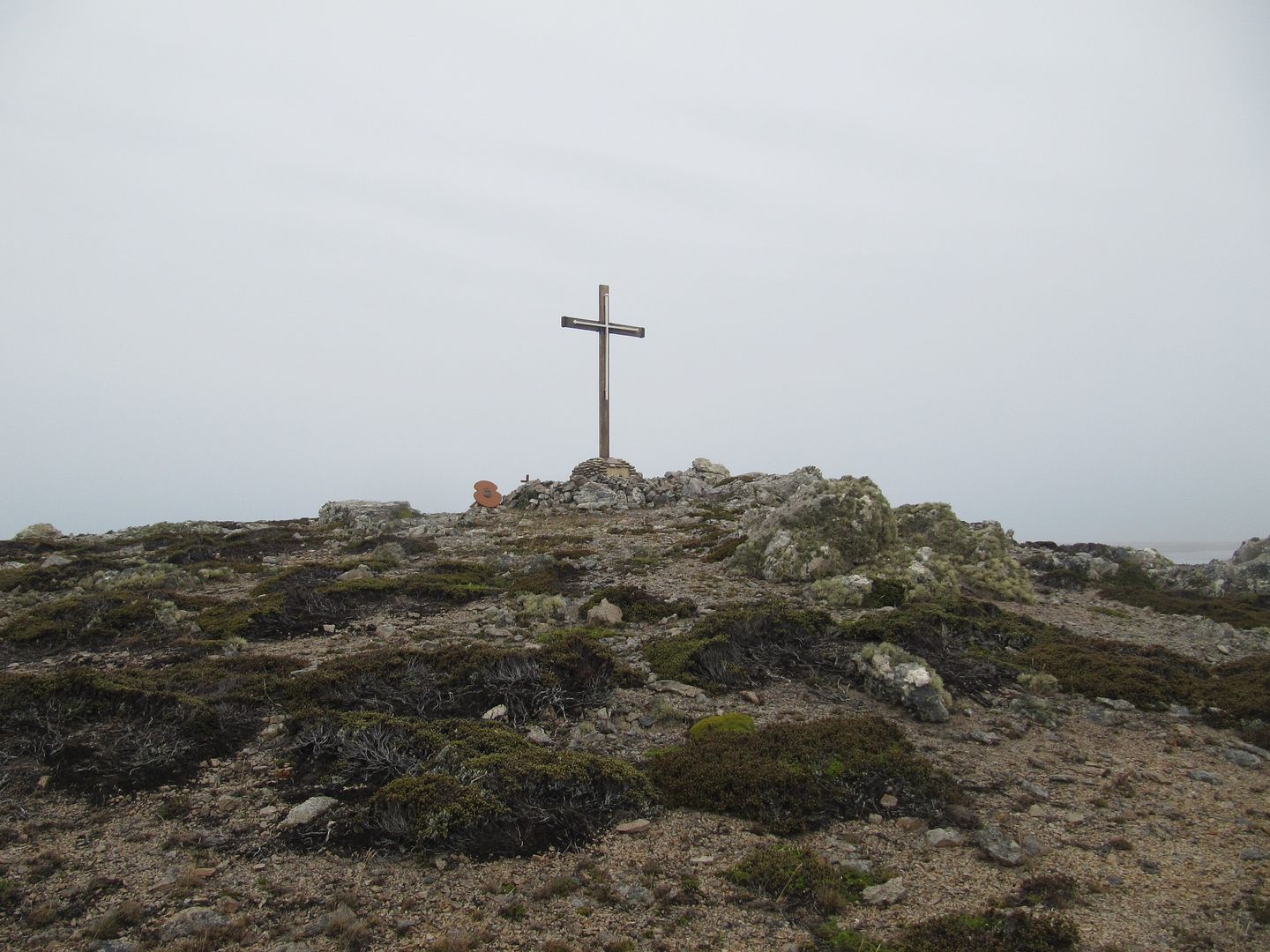 |
| HMS Coventry Memorial |
On the way back we stopped off at the memorial to HMS Coventry, which sits up on the side of First Mountain, overlooking the place that the ship went down on 25 May 1982. It had been there on radar picket duty and was effectively attracting fire away from other ships. It had successfully shot down attackers all day but finally got caught out by a sudden attack. The ship capsized in less than half an hour, killing 19 men, two of them Chinese laundry workers. The last person to leave the ship was the Captain, David Hart-Dyke (father of comedian Miranda Hart), who spent years coming to terms with the loss of the ship and the lives of some its crew. The memorial was built in 1983 by ex Coventry crew members.
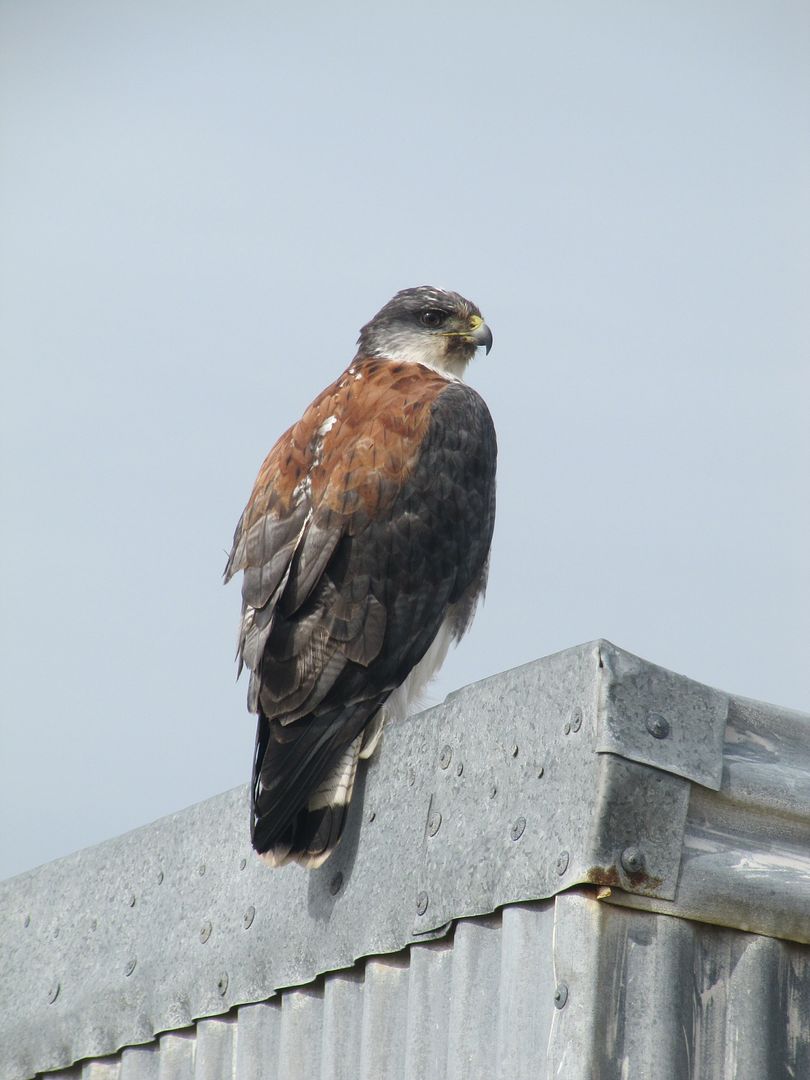 |
| Variable Hawk |
And for any bird lovers reading I'll include the picture of the other bird that we saw that I know the name of. It is a variable hawk. It was originally called a red backed hawk but that got confusing as the hawks are different colours depending on their age, gender and the season. This one does have a red back so is apparently an adult female in her dark phase. And that is probably the last bit of proper birding information you can expect from me!










My brother the penguin whisperer
ReplyDelete